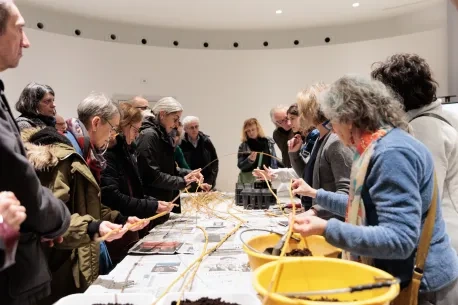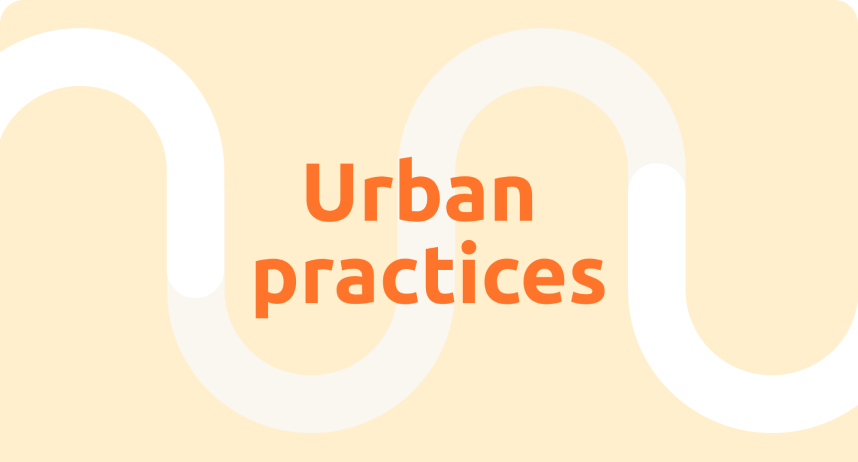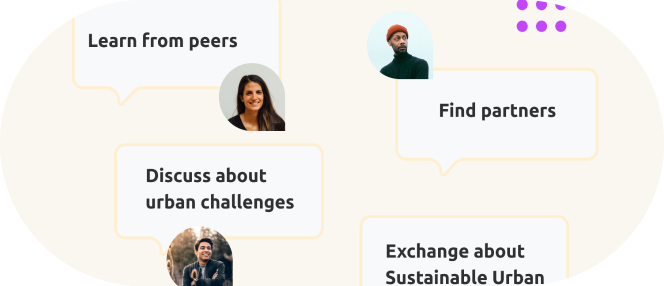Turku and Malmö: Two Cities, One Vision - A story of mutual inspiration and innovation on the winding road to a sustainable future
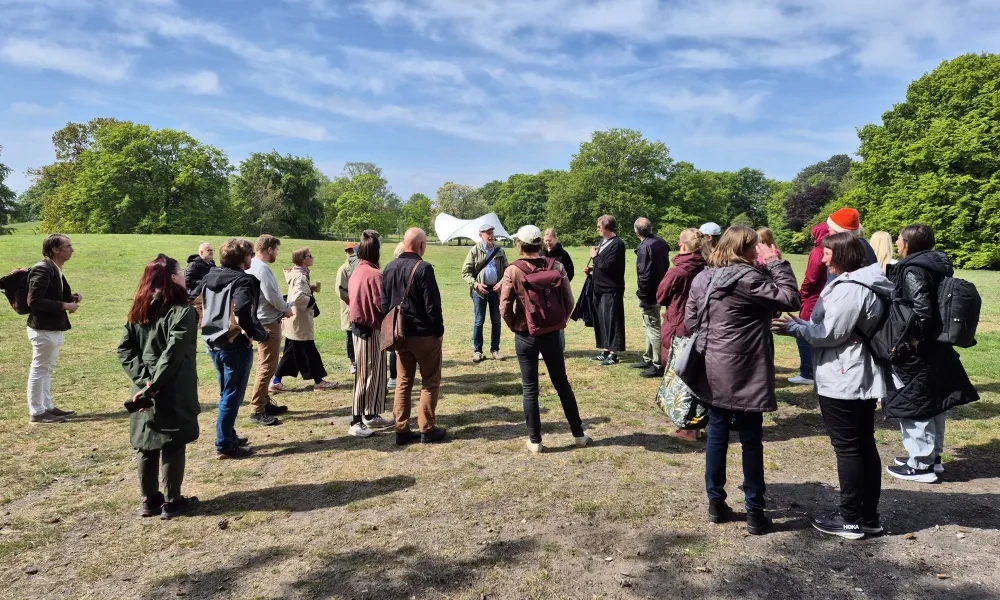
We can probably all agree that EUI projects are, by design, innovative. After all, that’s precisely what they were created to be, isn’t it? But then there are projects like Urban Biodiversity Parks – ones that approach innovation holistically, offering win-win solutions that can surprise even the most seasoned audiences.
In this article, we explore a story of mutual inspiration – a friendly rivalry and strategic partnership between two cities: Turku and Malmö. Although located in neighbouring countries – Finland and Sweden respectively – these cities have much in common. Most notably, they are united by a shared vision of a modern, inclusive, and sustainable urban future.
Malmö is widely recognised for its long-standing commitment to sustainable development. Frequently cited as one of Europe’s most sustainable cities, it boasts a rich portfolio of innovative pilot actions and exemplary practices. Yet, in the Urban Biodiversity Parks project, it was Turku that assumed the leading role.
“Surpassing the teacher?” you may ask. Not quite. Rather, Turku offered Malmö an alternative role and perspective – an opportunity to reflect on its achievements, identify new possibilities, and fully embrace its well-deserved role as a lighthouse city. And so, on a blustery spring day, the entire Urban Biodiversity Parks partnership gathered in Malmö – to be inspired.
What exactly is a lighthouse city?
Lighthouse cities are pioneers: they develop and test integrated, innovative solutions through small- or large-scale pilot projects. Acting as exemplars for their peers, they help others understand the impact of tested solutions, extract key lessons, and plan for replication – tailored to local contexts and conditions.
In the Urban Biodiversity Parks project, the City of Malmö plays a dual role. First and foremost, it is a Transfer City – learning from Turku’s innovative solution and exploring its potential for adaptation. However, due to its comparability to Turku, its impressive track record in sustainable innovation, and its wealth of piloting experience, Turku also recognised Malmö’s potential as a lighthouse city.
In Malmö, Turku found not only an experienced and motivated partner for knowledge transfer, but also a source of inspiration and mutual learning. Malmö’s solutions can be adapted and integrated into the Urban Biodiversity Park concept, further strengthening and enhancing the innovation. In my expert opinion, this creates the kind of win-win situation that all EUI projects should aspire to achieve.
Image
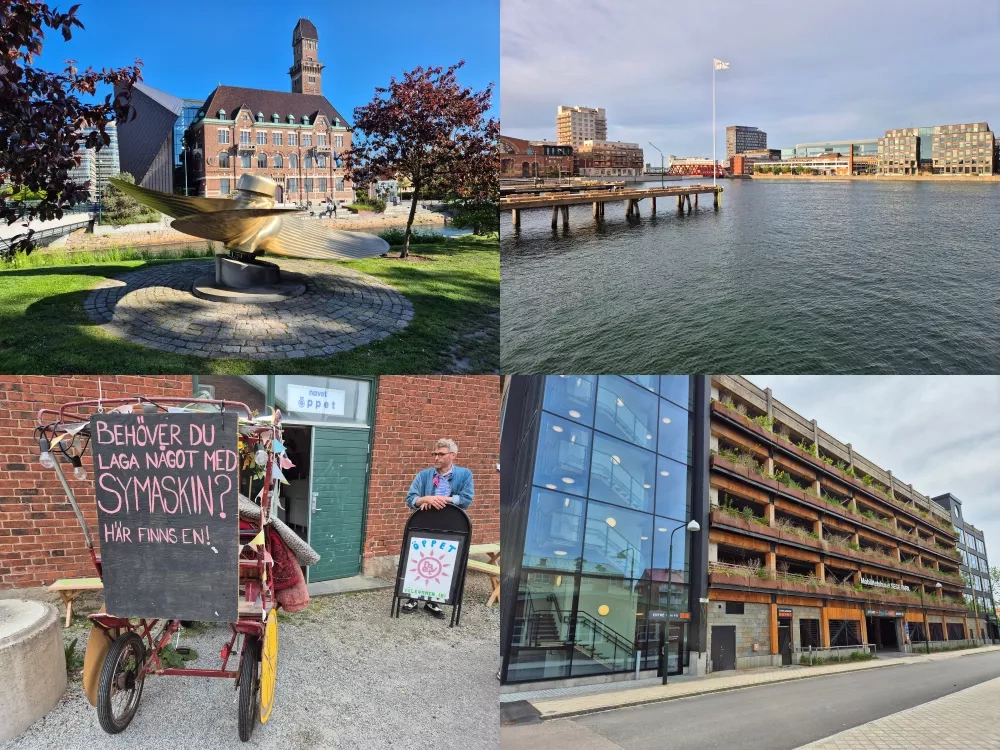

Once home to one of the world’s largest shipyards, Malmö’s harbour has been transformed into a vibrant community, and the first section of its heavily polluted seabed has been revitalised through eco-remediation (see both top images). Today, sustainability is embedded as a horizontal value across all aspects of urban development – from the library of things to multi-functional parking garages in Segepark neighbourhood (see both bottom images).
Why Turku considers Malmö a lighthouse city?
Although Turku and Malmö today share a common vision – a modern, inclusive, and sustainable urban future – their paths were not always so closely intertwined. As Per-Arne Nilsson, Senior Environmental Strategist in the City of Malmö, explains: “Malmö had its ups and downs through history.”
In the 1960s, Malmö became home to one of the world's largest shipyards, evolving into a major industrial hub in the region. However, this rapid economic development came at a cost – paid in the form of environmental degradation and a decline in quality of life, which in turn fuelled suburbanisation over the following decades. When the shipyard and related industries eventually closed for good, Malmö was left facing serious economic and social challenges.
By the 1990s, the people of Malmö were ready for change, and their leaders set a new course – towards becoming an attractive, inclusive, and sustainable city. One of the most significant steps was the establishment of Malmö University, a major development tool that Turku had long benefitted from. Since then, Malmö has become a city known for its willingness to try new ideas and experiment with innovative solutions – always with a clear objective: to learn from pilots and scale up the most successful ones city-wide.
Per-Arne confirms: “It was this continuity in sustainable urban development, combined with the pressing need to improve our city, that brought us success.”
Image
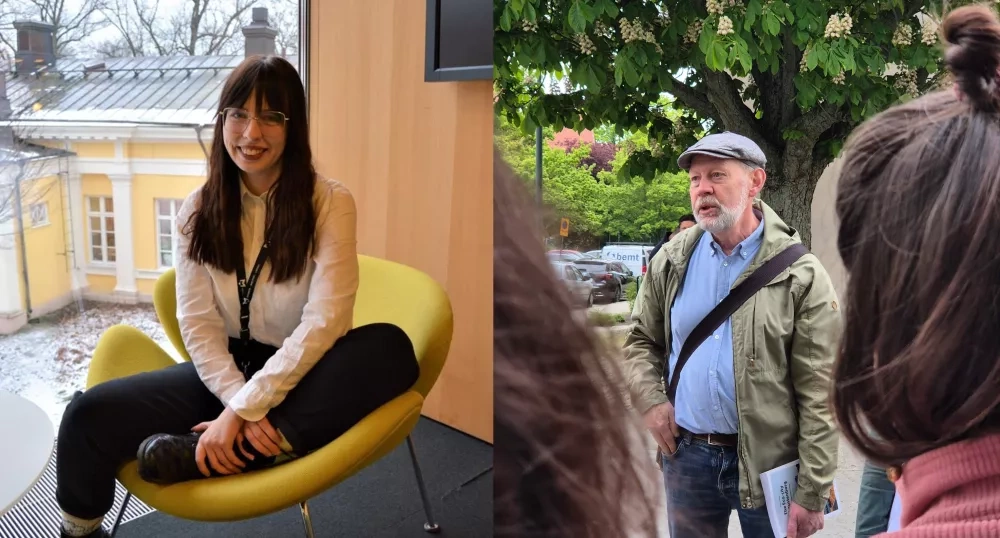

Our narrative is shaped by two main voices – Selina Raunio, Project Coordinator of the Urban Biodiversity Parks project, and Per-Arne Nilsson, Senior Environmental Strategist in the City of Malmö.
Turku, by contrast, is the oldest city in Finland and has historically served as an administrative, commercial, academic, and religious centre. Like Malmö, it has experienced its own ups and downs. However, Turku never quite hit the same critical low – at least from a sustainability perspective. This, in turn, delayed its shift towards sustainable development.
As Selina Raunio, Project Coordinator of the Urban Biodiversity Parks project, points out: “Unfortunately, we as people are not willing to change until we hit a low point.”
Although its mind-shift and transition came somewhat later, Turku eventually recognised the need for change and joined Malmö on its path towards sustainability. Today, the two cities collaborate actively, exchanging experiences and knowledge – most notably through the Union of the Baltic Cities, a proactive, voluntary network that mobilises the shared potential of member cities to support democratic, economic, social, cultural, and environmentally sustainable development across the Baltic Sea region.
Per-Arne notes: “It’s great to be a leader, but it’s just as valuable to observe and learn from other cities like Turku. We want to gain a fresh perspective and see how we might further strengthen our urban biodiversity efforts with new solutions.”
Selina picks up: “The City of Malmö is so green, and I admire their team for being bold in piloting and then adopting innovative sustainable solutions. I believe it’s this attitude that keeps them ahead of us in many ways – so they are a proper lighthouse city for us.” And she adds with a grin: “But, with projects like Urban Biodiversity Parks, we’re catching up!”
So, what have we learned?
Malmö’s urban sustainability solutions can broadly be divided into two categories: large-scale, complex interventions and smaller, localised solutions.
- Greening the Möllevången – A densely populated neighbourhood with limited green spaces has seen its canopy cover increased from 8% to 12% in just a few years, thanks to a successful pilot project. The visible results have gained strong support from local residents, who are now actively calling for continued greening efforts.
- Ekostaden Augustenborg Urban Renewal – This neighbourhood has become a global benchmark for sustainable urban renewal, with a very effective stormwater reuse system for climate adaptation and improved urban biodiversity. A network of green roofs, open stormwater channels, ponds and wetlands, designed in 1998, was able to withstand 100-year rain event that flooded large parts of the city in 2014.
- Segepark – Once a hospital and its surrounding grounds, Segepark is now being transformed into a neighbourhood based on sustainability and the sharing economy. The 3/30/300 principle has been applied in full: residents should be able to see at least three trees from their home, the area should have 30% tree canopy cover, and the nearest green space should be no more than 300 metres away.
Image
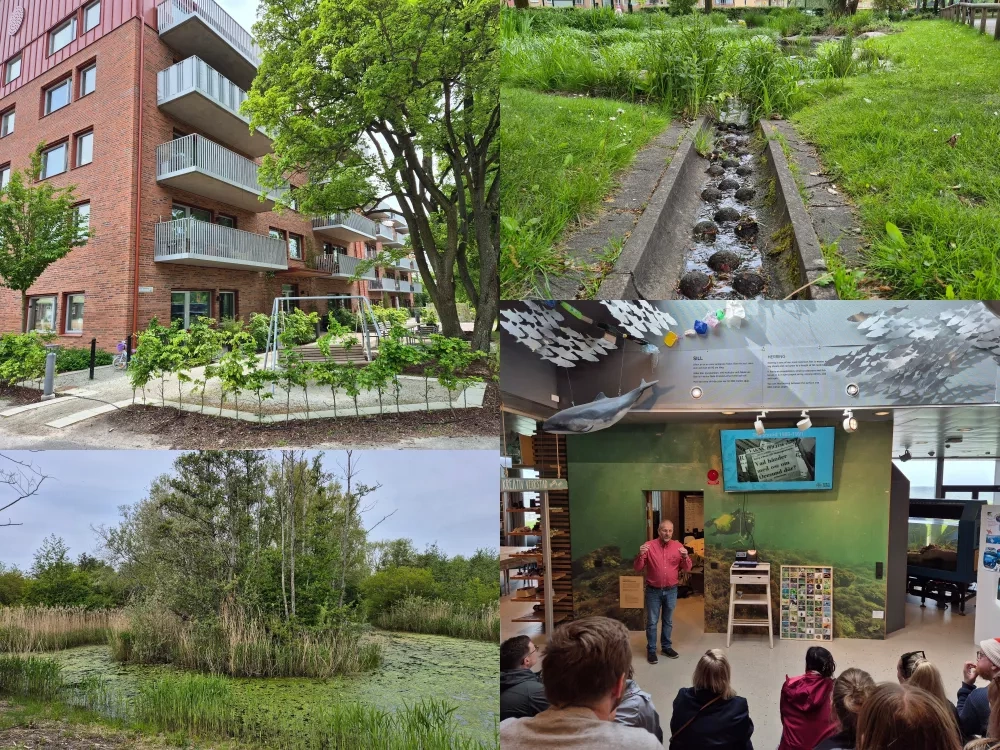

All of Malmö’s large-scale sustainability solutions are both impressive and inspiring - Segepark (top left), Augustenborg (top right), Riseberga Bäck (bottom left), and the Marine Education Centre (bottom right).
- Riseberga Bäck Anti-flood Measures – The Toftanäs wetland on the outskirts of Malmö, originally created in the 1990s to retain stormwater, has since evolved into a mosaic of wetlands, ponds, and wet and dry meadows - a biodiversity-rich oasis. Inspired by this transformation, Malmö has begun developing a long-term plan based on nature-based solutions to create a resilient, attractive, and biodiverse corridor through Malmö.
- Marine Education Centre – This unique institution has been uncovering the secrets of the marine environment for over 20 years, offering a wide range of educational activities. It also leads sustainability and innovation projects, with a strong focus on nature-based solutions, climate adaptation, and marine research. As such, it plays a key role in raising awareness of sustainability and biodiversity in Malmö and worldwide.
- Limhamn’s Lime Quarry Nature Reserve - Once an active limestone quarry and cement production site, Limhamn is now a protected nature reserve and home to over 2,000 species of plants and animals. Despite its legal protection, the area faces increasing urbanisation pressures, posing a unique challenge for the City of Malmö.
Image
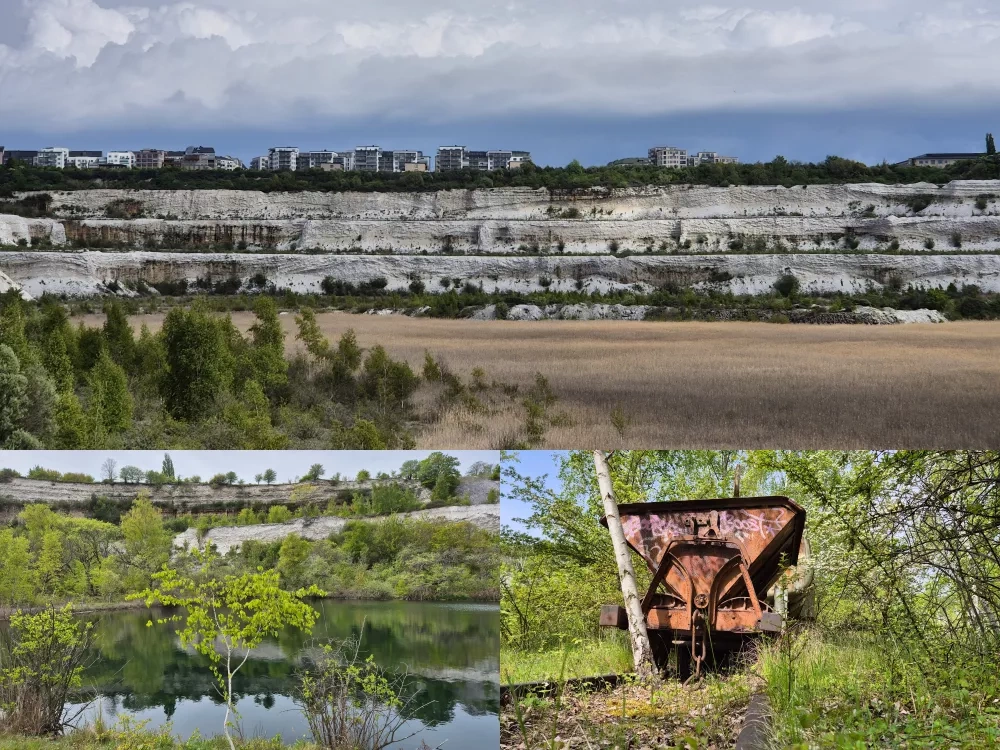

Limhamn Lime Quarry Nature Reserve – Once a vast industrial quarry, today a thriving wildlife oasis on Malmö’s outskirts – and tomorrow? As we can see, Malmö’s urban expansion is already “lurking” in the background…
Although above-described complex/large-scale solutions are impressive and inspiring, in my view, they will prove to be too complex to transfer – at least within the Urban Biodiversity Parks project framework. Nore is this expected; after all, “biting off more than you can chew” can be one of the most discouraging types of transfer failure.
In contrast, the small-scale solutions immediately sparked lively discussions among participants – clearly highlighting their value in this knowledge transfer process. The most promising examples included:
- Micro Urban Forests and Green Areas – Purposefully created, expanded, and reinforced across residential areas in Malmö, these solutions contribute to a network of biodiversity hotspots and enhance climate resilience at the neighbourhood level.
- Leaf Collectors – A simple yet effective pro-biodiversity solution, where leaves are not removed but instead gathered into designated piles within residential areas. These create microhabitats for species that rely on such environments – while also reducing maintenance costs.
Image


It was small scale solutions – micro urban forest (top left), leaf collector (top right), logs and rocks in practical use (bottom pictures) – that draw most attention and interest from the participants.
- The use of Logs and Rock-piles in Urban Green Areas – Logs and rocks, often sourced from local construction sites, are reused as natural barriers in parks and residential area – replacing fences or dividers. Rock piles also serve as important hibernation sites for many “residents” of urban parks and forests. These are simple, low-cost, low-maintenance, yet highly effective ways to boost urban biodiversity.
- From Concrete to the Woods Playground – This unique concept begins as a modern-style playground in a traditionally designed park and intuitively guides children towards the adjacent urban forest. In my view, a brilliant way to reconnect our urban youth with nature!
Image
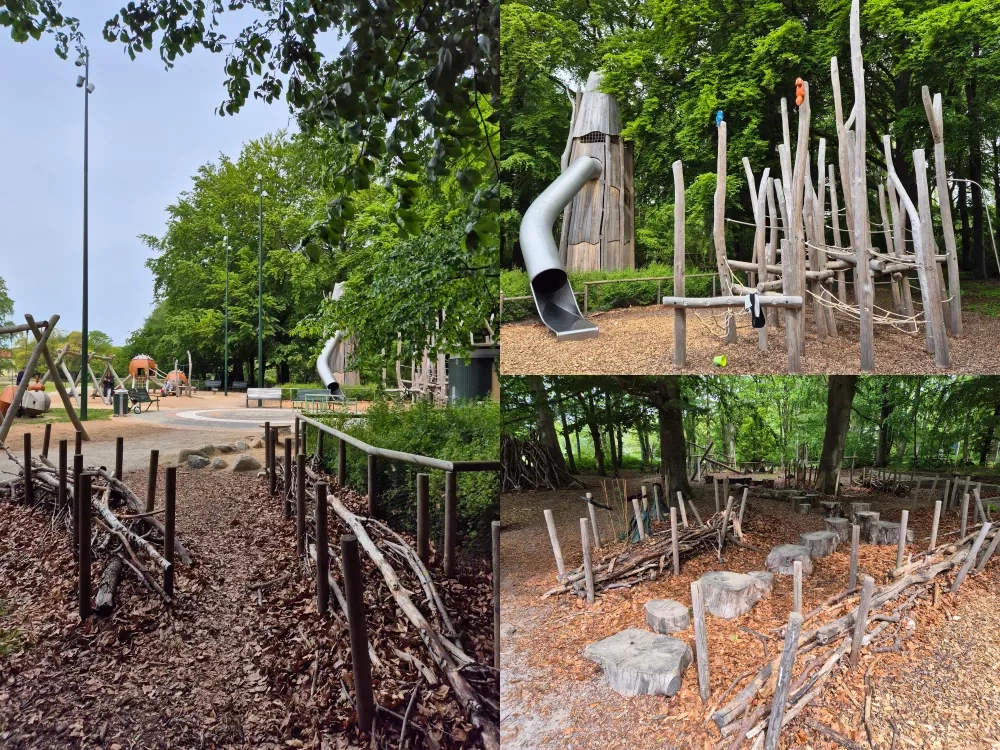

Children naturally move from one playground element to the next - gradually leaving behind artificial materials and surroundings and ending up in the forest, playing with branches and leaves, climbing trees, and engaging directly with nature.
Needless to say, much of the following day was devoted to reflection, identifying the best solutions, exploring their transfer potential, and planning how to make it happen. After all, we are a dedicated transfer partnership…
Image
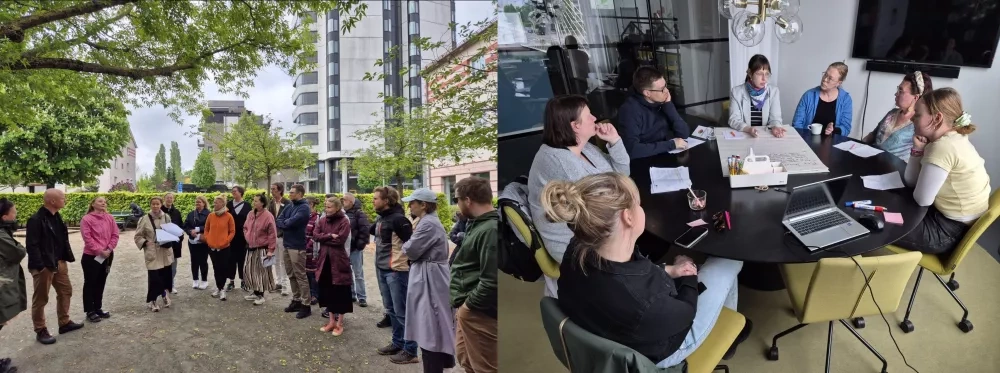

The Urban Biodiversity Parks partnership exploring Malmö’s sustainable solutions (left), while Turku’s core partners draft key lessons learned and discuss the transfer potential of Malmö’s practices – and how they could be integrated into Turku’s own innovative solution (right).
A few impressions and concluding thoughts…
When asked whether the two cities see each other as sustainability rivals, both Selina and Per-Arne respond in unison: “No, there’s no rivalry between us. We’re just glad to have someone who keeps pushing us forward!”
It is both refreshing and inspiring to witness this level of cooperation in today’s increasingly competitive world. Best of all, this attitude is contagious. By exposing the other two Transfer Cities – Košice (Slovakia) and Neapoli-Sykies (Greece) – to Malmö’s perspective and experience, their transfer ambitions have only grown stronger. They now have two role models to learn from, drawing both inspiration and practical solutions.
As one participant concluded during our final lighthouse city-visit session: “For us, it is extremely valuable to understand that we can address the same challenge with different solutions. We just need to choose the one that works best for us – and adapt it to our own circumstances and needs.”
This clearly shows that the lighthouse city visit was a valuable experience for all involved. Malmö had the opportunity to act as a mentor, while also benefiting from an external perspective and constructive feedback. Meanwhile, Turku, Košice, and Neapoli-Sykies gained an additional source of inspiration and practical solutions to consider – exactly what this high-quality knowledge transfer process aimed to deliver.
About this resource
The European Urban Initiative is an essential tool of the urban dimension of Cohesion Policy for the 2021-2027 programming period. The initiative established by the European Union supports cities of all sizes, to build their capacity and knowledge, to support innovation and develop transferable and scalable innovative solutions to urban challenges of EU relevance.
Similar content
